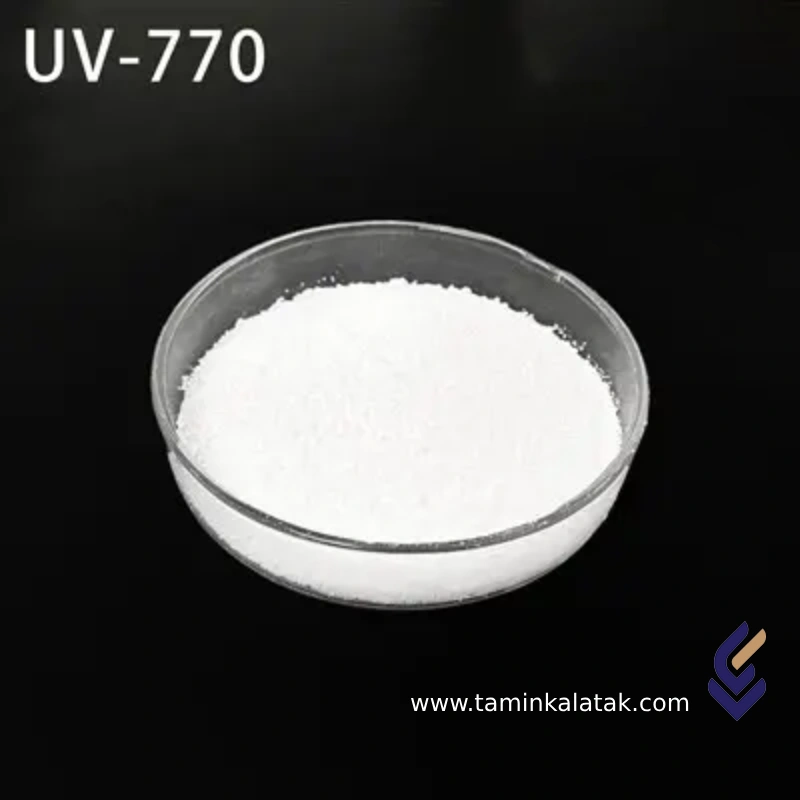Polymers are made up of very large molecules made up of many repeating units called monomers, which ultimately form this long polymer chain
Hindered Amine Light Stabilizers (HALS)
Hindered Amine Light Stabilizers (HALS) are a class of polymer additives used to prevent UV-induced degradation in polymers. These compounds work by scavenging free radicals generated during photo-oxidation, thereby preventing the breakdown of polymer chains.
Chemical Structure of Hindered Amine Light Stabilizers
HALS are typically derivatives of 2,2,6,6-tetramethylpiperidine. Their basic structure includes hindered amine groups that, due to steric hindrance, are resistant to side reactions. During the stabilization process, these compounds convert into aminoxyl radicals (N–O•) and then revert to their original form via the Denisov Cycle, enabling long-term stability.
Properties of Hindered Amine Light Stabilizers
-
High Light Stability: They prevent photodegradation of polymers by scavenging free radicals.
-
Thermal Stability: Perform well at elevated temperatures, although effectiveness may reduce at very high temperatures.
-
Extraction Resistance: Their high molecular weight provides resistance to solvent extraction.
-
Compatibility with Various Polymers: Effective in polyolefins, polyurethanes, and polyesters.
Applications of Hindered Amine Light Stabilizers
-
Automotive Industry: Used in interior and exterior parts to prevent photodegradation.
-
Packaging Industry: Applied in plastic films to extend the shelf life of packaged products.
-
Agriculture: Used in greenhouse films for UV resistance.
-
Construction Industry: Utilized in coatings and building materials for enhanced weather durability.
Advantages of Hindered Amine Light Stabilizers
-
Long-Term Stability: Due to their regenerative cycle, they are not consumed and offer long-lasting protection.
-
No UV Absorption: They do not absorb UV themselves but act by neutralizing free radicals.
-
Color Compatibility: Help maintain color and surface gloss in pigmented systems.
Disadvantages of Hindered Amine Light Stabilizers
-
Ineffective in PVC: They do not perform well in polyvinyl chloride (PVC) due to the presence of released HCl.
-
Sensitive to High Temperatures: Performance may decline at very high processing temperatures.
-
High Cost: More expensive compared to some other types of stabilizers.
Applications
| Applications | , , , , , , , , |
|---|
Hindered Amine Light Stabilizers (HALS)
| Products | HALS type | Molecular weight (g/mol) | Melting point (°C) | Physical condition | Applications |
|---|---|---|---|---|---|
| ADK STAB LA-52 | N-CH₃-type | 847 | >65 | Pale yellow powder | Light/thermal stability in filled or colored polymers. |
| ADK STAB LA-57 | N-H-type | 791 | 125–135 | Pale yellow powder | Optical stability in various polymers. |
| ADK STAB LA-63P | High molecular weight | ~2000 | 85–105 | Pale yellow powder | Optical stability in thin films and engineering plastics. |
| ADK STAB LA-72 | N-CH₃-type liquid | 239 | Liquid | Pale yellow powder | Light stability in coatings and sealants. |
| BLS® 600 | High molecular weight | - | - | Powder | Light stability in plastics, fibers and adhesives. |
| HALS 770 | Average molecular weight | - | - | Powder | Used in automotive, packaging, agriculture and furniture. |
| HALS 944 | High molecular weight | - | - | Powder | Optical stability in polyolefins and industrial applications. |
| HALS 622 | High molecular weight | - | - | Powder | Light stability in polyolefins and polyesters. |
| HALS 123 | Low molecular weight | - | - | Liquid | Light stability in coatings and adhesives. |
| HALS 292 | Low molecular weight | - | - | Liquid | Light stability in clear and colored coatings |







